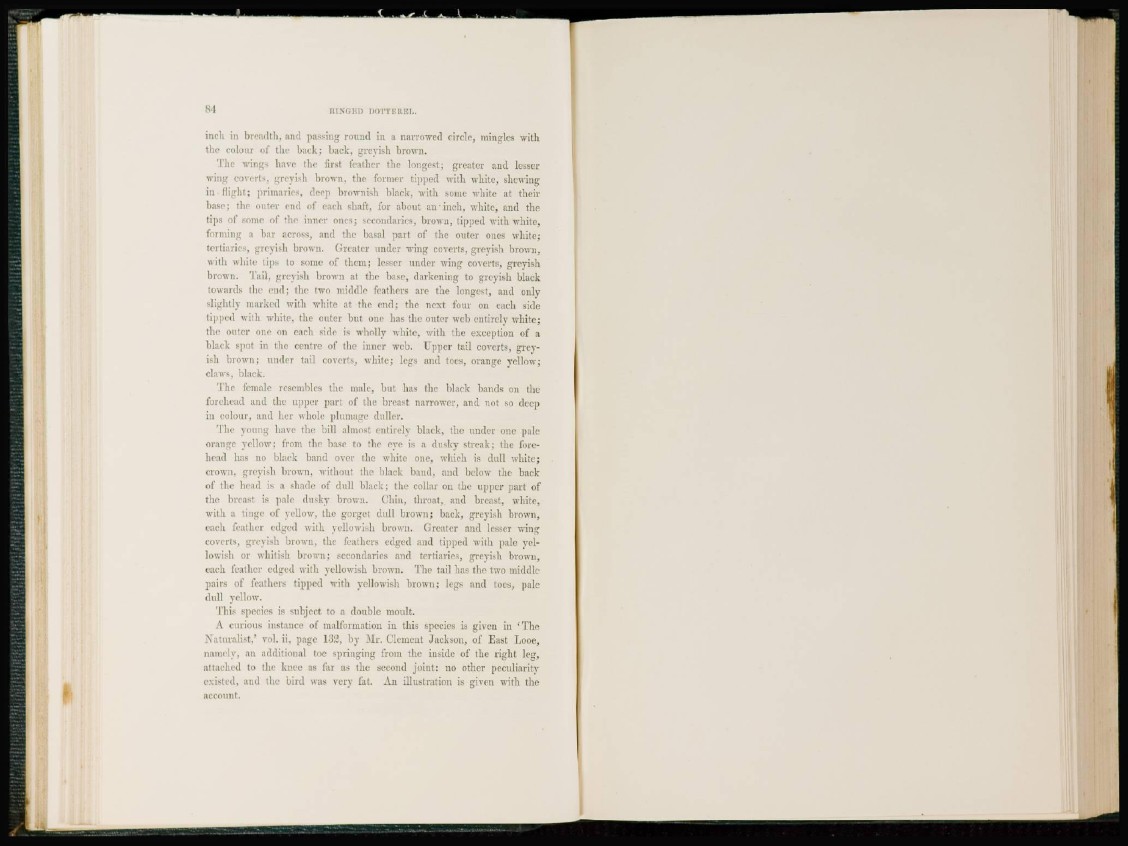
1 HI N O K B DOTTEREL.
inch in breadth, mid passing round in a narrowed circle, mingles with
the colour of the back; back, greyish brown.
The wings have the first feather the longest; greater and lesser
wing coverts, greyish brown, the former tipped with white, shewing
in flight; primaries, deep brownish black, with some white at their
base; the outer end of each shaft, for about an- i n c h , white, and the
tips of some of the inner ones; secondaries, brown, tipped with white,
forming a bar across, and the basal part of the outer ones white;
tertiaries, greyish brown. Greater under wing coverts, greyish brown,
witli white tips to some of them; lesser under wing coverts, greyish
brown. Tail, greyish brown at the base, darkening to greyish black
towards the cud; the two middle feathers are the longest, and only
slightly marked with white at the end; the next four on each side
tipped with white, the outer but one has the outer web entirely white;
the outer one on each side is wholly white, with the exception of a
black spot in the centre of the inner web. Upper tail coverts, greyish
brown; under tail coverts, while; legs and toes, orange yellow;
claws, black.
The female resembles the male, but has the black hands on the
forehead and the upper part of the breast narrower, and not so deep
in colour, and her whole plumage duller.
The young have the bill almost entirely black, the under one pale
orange yellow: from the base to the eye is a dusky streak; the forehead
has no black band over the white one, which is dull white;
crown, grevish brown, without the black band, and below the back
of the head is a shade of dull black; the collar on the upper part of
the breast is pale dusky brown. Chin, throat, and breast, white,
with a tinge of yellow, the gorget dull brown; back, greyish brown,
each feather edged with yellowish brown. Greater and lesser wing
coverts, greyish brown, the feathers edged and tipped with pale yellowish
or whitish brown; secondaries and tertiaries, greyish brown,
each feather edged with yellowish brown. The tail has the two middle
pairs of feathers tipped with yellowish brown; legs and toes, pale
dull yellow.
This species is subject to a double moult.
\ curious instance of malformation in this species is given in 'The
Naturalist,' vol. ii, page 1313, by Mr. Clement Jackson, of East Looe,
NAMELY, an additional toe springing from the iuside of the right leg,
attached to the knee as far as the second joiut: no other peculiarity
cxistcd, and the bird was very fat. An illustration is given with the
account,